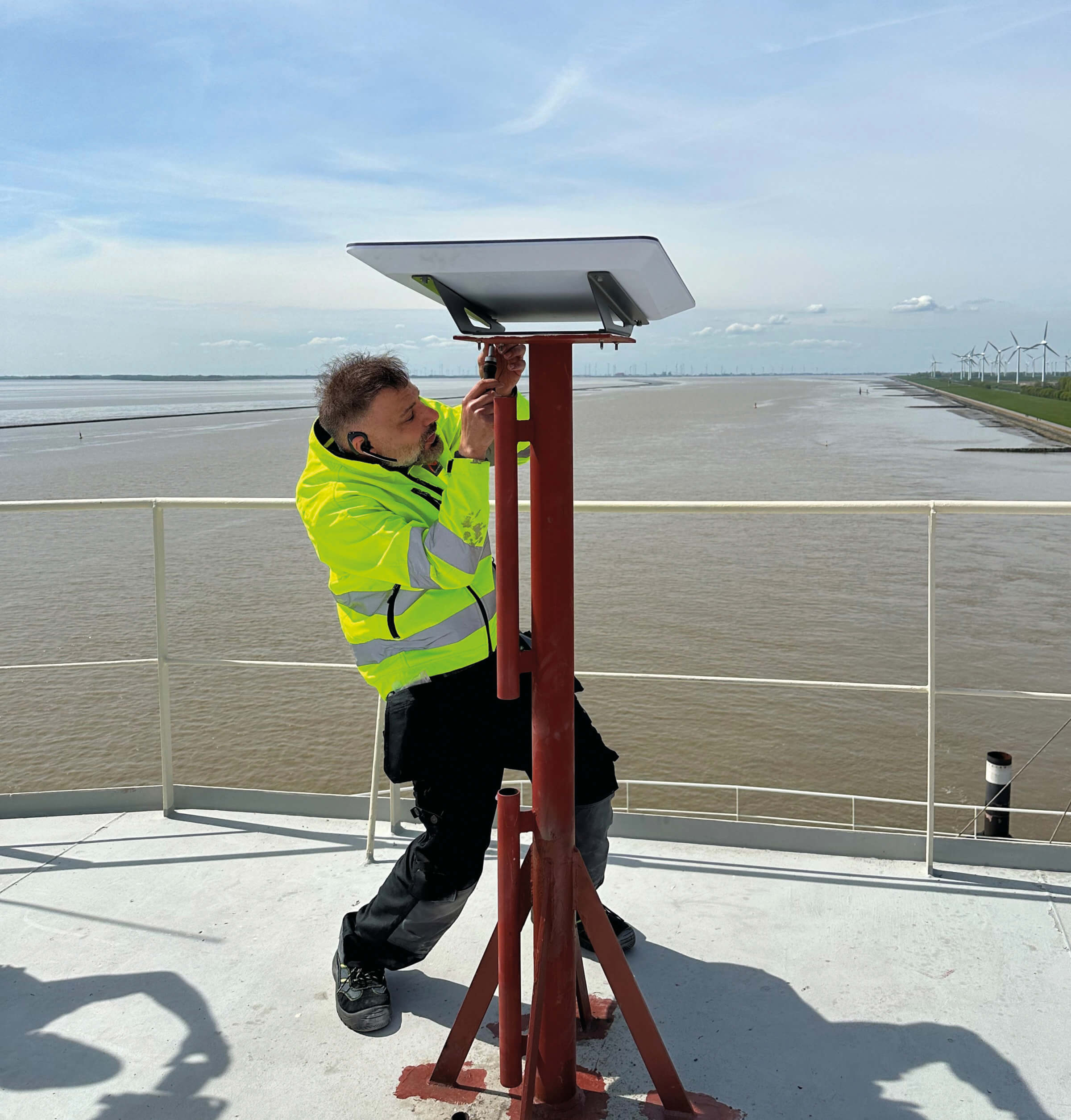Resources
A collection of free resources to help you raise funds and share the work we do

By Carly Fields
Shipping line MOL took an important step forward last year when it announced that it would install a Starlink satellite communication service on 233 of its ocean-going vessels. These ships will make use of multiple small satellites deployed in low orbit to provide high-speed, low- latency connectivity.
The announcement followed trials on several MOL-operated vessels which saw a “dramatic improvement in the communication environment”, according to MOL, with up to a 50- fold increase in communication speed, enabling seafarers to make video calls with family members and watch videos.
Speaking to The Sea, Yuya Inoue, senior coordinator in the innovation lead team at the DX Co-creation Unit at MOL, said that connection at sea is a lifeline. “Isolation affects everything. Attracting and retaining seafarers, particularly the young generation, is a challenge. The role of connectivity is very significant, making the maritime profession an attractive career choice.
“We are navigating towards a future of an interconnected maritime community. The journey we have embarked on with Starlink is more than a tech advancement.”
However, MOL is the exception, rather than the norm and the industry is “still some way from connectivity being a commodity”, noted Marlink’s president for maritime, Tore Morten Olsen. Marlink is integrating the Low Earth Orbit (LEO) satellite network service Starlink, powered by SpaceX, with its Sealink Geostationary Orbit (GEO) VSAT service and its digital platform on the vessels.
LEO satellites orbit at an altitude of 1,200 kilometres or less, significantly closer to Earth than their GEO counterparts. This proximity allows for lower latency, higher data transfer speeds, and more consistent global coverage, including hard-to-reach polar regions.
In a jointly produced white paper, MOL and Marlink said that LEO networks can significantly improve the quality of life for seafarers by providing reliable, high-speed connectivity even in remote regions.
“This enables crew members to stay in touch with their families and friends, access news and entertainment, and maintain a sense of connection with the world beyond their vessel, reducing feelings of isolation and loneliness.”
Improved access
Additionally, with the support of LEO satellite networks, seafarers can access online training and professional development resources while at sea, allowing them to enhance their skills and stay up to date with industry advancements. “This not only contributes to the personal growth of individual seafarers, but also benefits the maritime industry as a whole by fostering a highly skilled and competent work- force.”
Plus, remote medical assistance can be accessed at the time of need and LEO networks can expand the range of entertainment options available to crew members. “With improved connectivity, seafarers can stream movies, TV shows, and music from various online platforms, providing a wider selection and up-to-date content.”
Looking ahead, Olsen gave an insight into Maritime 4.0, looking at how the industry can take advantage of increasing quantities of data, facilitated by greater connectivity. He sees greater use of AI and automation, and the arrival of autonomous vessels that will change crew competency requirements. AI will be proactively used on voyage execution and fully smart-enabled vessels will have sensor tech everywhere that customers can use to optimise voyages. By 2023, he sees a fifteen-fold rise in data consumed in shipping operations versus today.
There will also be an increase in remote surveys and data collection will mature for all new ships, while smart ships will become a reality. All this will be underpinned by enhanced cyber detection as the adoption of LEO satellite networks introduces new cybersecurity risks to maritime operations.
“As digital connectivity and data transmission increase, so does the potential for cyber threats. These threats range from unauthorised access, data breaches, and hacking of navigation systems to more complex attacks targeting the ship’s control systems. Ensuring robust and resilient cybersecurity measures is critical for protecting sensitive data, maintaining privacy, and ensuring the safe and reliable operation of maritime communication systems,” the whitepaper concluded.